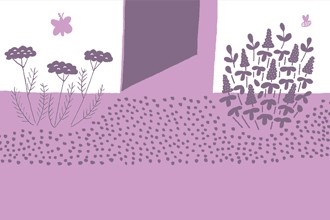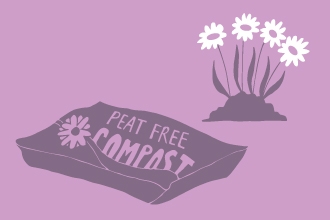As you may remember from our measuring carbon emissions blog, a large proportion of our emissions are inevitable and unavoidable, mainly due to the methane from our grazing livestock that are essential for the conservation of wildflowers on our grasslands. To reach our goal of achieving net zero greenhouse gas emissions, we need to address this and one way to do this is by undertaking carbon sequestration projects.
Carbon sequestration is a process by which carbon is taken out of the atmosphere and stored in the ground or within ecosystems themselves. This is a way of offsetting emissions that we cannot help but produce. One of the most effective methods of achieving this is by planting as many trees as possible. Not only do trees take and store carbon dioxide from the atmosphere but by planting a variety of mixed, native trees, we can create a new woodland that will ultimately develop into a vital habitat for many native species. Replanting areas that were once woodland will not only offset our emissions as the trees grow but will restore the biodiversity and habitats in that area. We've lost many areas of woodland and the wildlife that depends on this invaluable habitat have suffered as a consequence.
Woodlands are brilliant carbon stores. As trees grow and a woodland matures, atmospheric carbon dioxide will be stored within the leaves and trunks of the trees as well as in the soil beneath. By the time the trees are 30 years old, a mixed native broadleaved woodland of 20 hectares will sequester approximately 50 tonnes of carbon dioxide (CO2) equivalent per year. As it's transitioning from the important scrub stage to woodland, it can still sequester around 38 tonnes of CO2 equivalent per year.
Creating other habitats such as hedgerows and saltmarshes can also sequester carbon while providing crucial habitats for wildlife. The Trust already has many of these habitats across Worcestershire so a large amount of carbon is already being sequestered. However, even more habitats will need to be created for the Trust to continue to offset our emissions and we are working towards that.
By encouraging tree planting in your local areas and gardens, not only will you help to create vital habitats but you'll also improve the air quality and reduce pollutants, depending on the tree species. The more diverse of a species mix you're able to plant (or encourage others to plant), the more resilient they - and both wildlife and us - will be to climate changes in the future.



